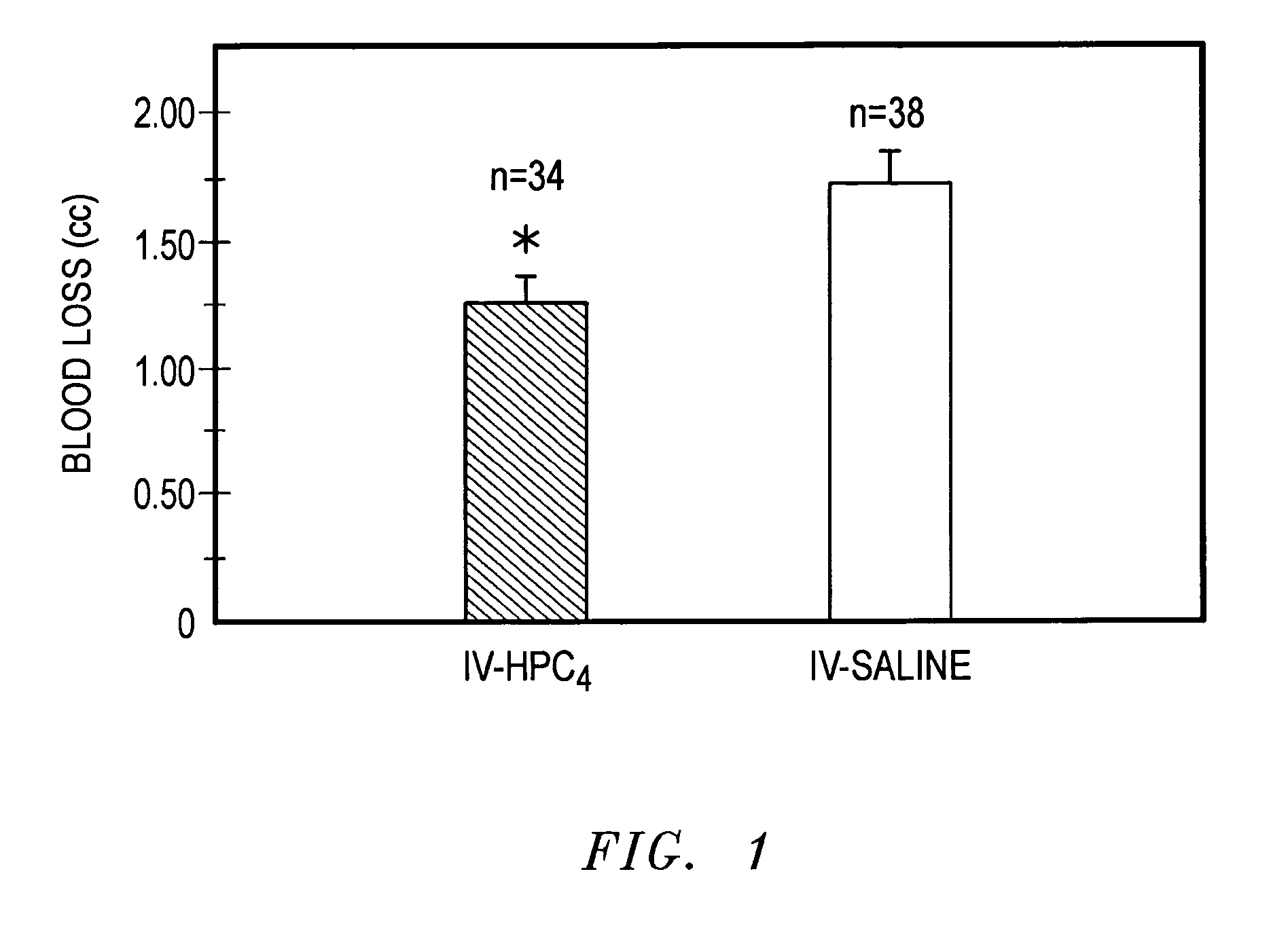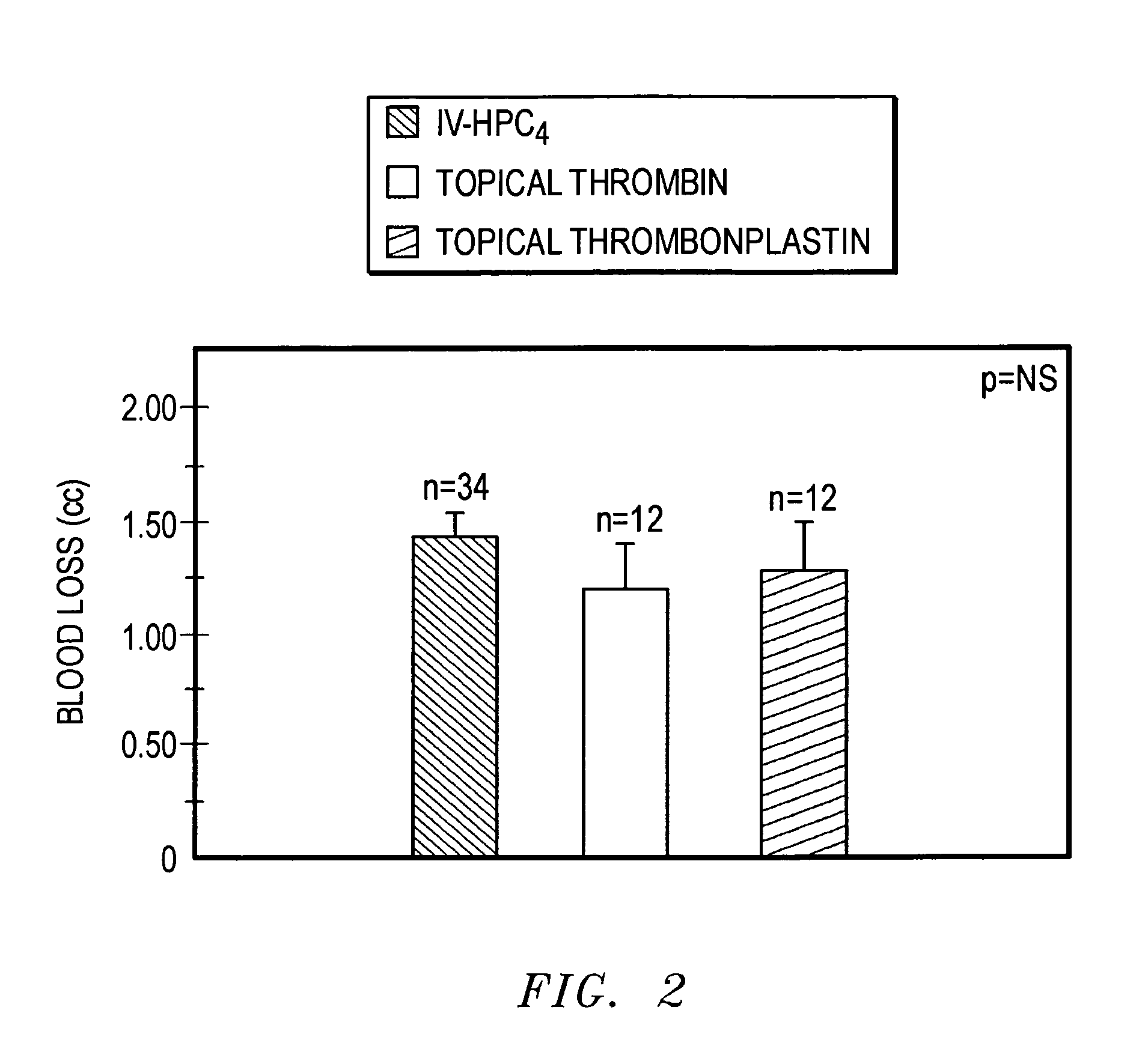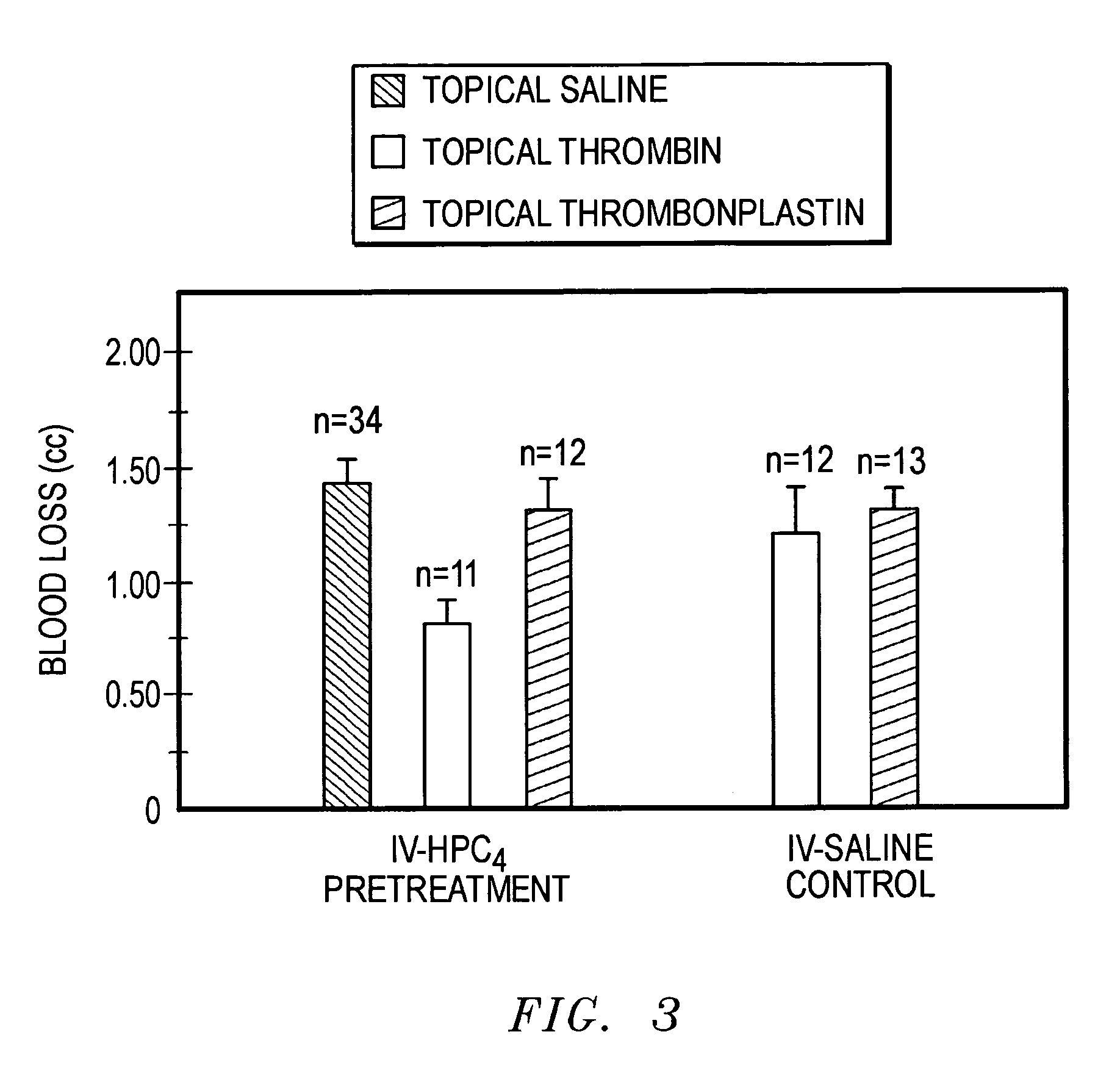Blockade of protein C activation reduces microvascular surgical blood loss
a technology of protein c activation and blockade, which is applied in the direction of antibody medical ingredients, peptide/protein ingredients, extracellular fluid disorders, etc., can solve the problems of inability to administer topical agents, inability to ligate the vessel or electrocautery, and undesirable topical agents, so as to reduce surgical blood loss, block any subsequent activation of the affected protein c molecule, and reduce blood loss
- Summary
- Abstract
- Description
- Claims
- Application Information
AI Technical Summary
Benefits of technology
Problems solved by technology
Method used
Image
Examples
Embodiment Construction
[0012]It has been discovered that natural anticoagulants can be blocked systemically or topically and inhibit microvascular clotting without initiating widespread coagulation. Based on this discovery, it is possible to selectively inhibit microvascular coagulation by systemic administration of an inhibitor of a natural anticoagulant, such as protein C, alone or in combination with topical administration of a coagulant such as thrombin or tissue thromboplastin.
[0013]Protein C is a 62,000 Da plasma glycoprotein precursor of a serine protease-labeled activated protein C, as reported by Miletich, J. P. Laboratory diagnosis of protein C deficiency. Semin. Thromb. Hemost. 16(2): 169 (1990). Proteolytic cleavage to form activated protein C from its inactive precursor occurs at a specific arginine-leucine bond located on the heavy chain 12 amino acids from the amino terminal, as reported by Kisiel, W. Human plasma protein C: Isolation, characterization and mechanism of activation by alpha-t...
PUM
| Property | Measurement | Unit |
|---|---|---|
| weight | aaaaa | aaaaa |
| thickness | aaaaa | aaaaa |
| optical density | aaaaa | aaaaa |
Abstract
Description
Claims
Application Information
 Login to View More
Login to View More - R&D
- Intellectual Property
- Life Sciences
- Materials
- Tech Scout
- Unparalleled Data Quality
- Higher Quality Content
- 60% Fewer Hallucinations
Browse by: Latest US Patents, China's latest patents, Technical Efficacy Thesaurus, Application Domain, Technology Topic, Popular Technical Reports.
© 2025 PatSnap. All rights reserved.Legal|Privacy policy|Modern Slavery Act Transparency Statement|Sitemap|About US| Contact US: help@patsnap.com



